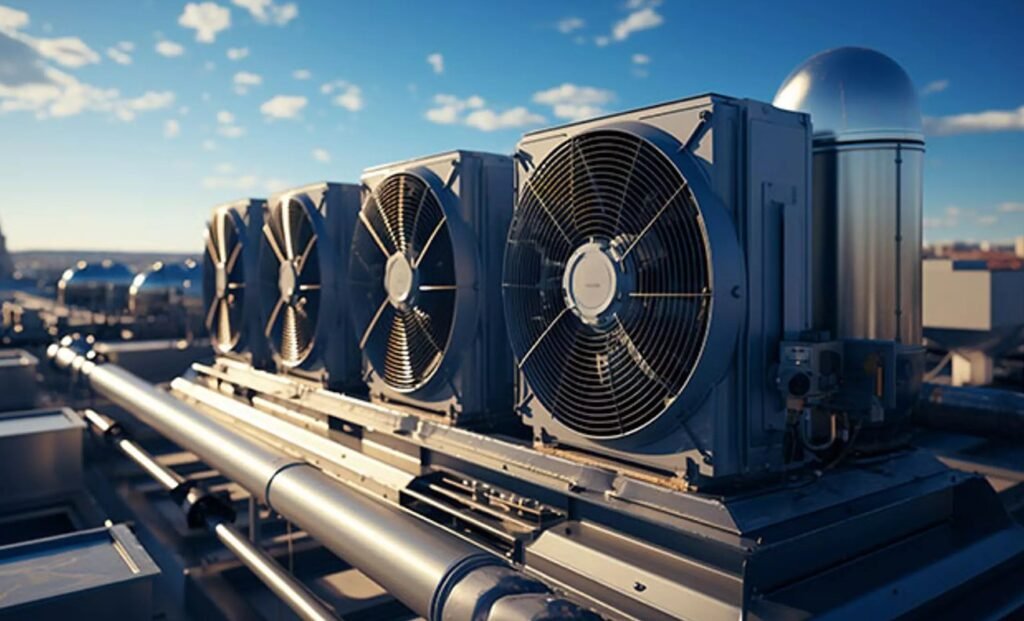The cooling sector is one of the major contributors to global greenhouse gas emissions, as it relies heavily on fossil fuels and refrigerants that have high global warming potential. However, a new report by the United Nations Environment Programme (UNEP) and the International Energy Agency (IEA) shows that it is possible to drastically reduce the emissions from cooling by 2050, while also providing universal access to life-saving cooling services and saving trillions of dollars.
The report, titled Cooling Emissions and Policy Synthesis Report, estimates that by taking key measures to improve the energy efficiency and climate-friendliness of cooling equipment, the world can avoid as much as 460 billion tonnes of carbon dioxide equivalent emissions over the next four decades. This is roughly equal to eight years of global emissions at 2018 levels.

The report also highlights the importance of cooling for human health, food security, economic productivity, and environmental sustainability. Cooling is essential for preserving vaccines, medicines, and food, as well as for providing comfort and safety for billions of people, especially in hot and humid regions. However, access to cooling is still unequal and inadequate, with an estimated 3.6 billion people lacking proper cooling services.
By adopting climate-friendly cooling solutions, the world can not only reduce the emissions and energy demand from cooling, but also ensure that everyone can benefit from cooling, especially the most vulnerable and marginalized groups. The report estimates that by 2050, climate-friendly cooling can save up to $2.9 trillion in reduced electricity generation, transmission, and distribution costs, as well as create up to 65 million new jobs in the cooling sector.
The challenges and opportunities of cooling
The report warns that the cooling sector is on track to emit more than 130 billion tonnes of carbon dioxide equivalent by 2050, which is more than the current annual emissions of China, India, and the European Union combined. This is due to the increasing demand for cooling, driven by population growth, urbanization, rising incomes, and climate change. The report projects that by 2050, there will be about 14 billion cooling appliances in use, compared to about 3.6 billion today.
The report also points out that the cooling sector is not only responsible for direct emissions from the refrigerants used in cooling equipment, but also for indirect emissions from the electricity consumed by cooling devices. The report estimates that cooling accounts for nearly 20% of global electricity consumption, and that this share could rise to 40% by 2050 if no action is taken.
The report identifies four key measures that can help to achieve near-zero emissions from cooling by 2050. These are:
- Implementing and enforcing minimum energy performance standards (MEPS) and labeling schemes for cooling equipment, which can improve the average efficiency of cooling devices by 50% by 2050.
- Promoting the use of low-global warming potential (GWP) refrigerants, which can reduce the direct emissions from cooling by 90% by 2050. This can be done by ratifying and implementing the Kigali Amendment to the Montreal Protocol, which aims to phase down the production and consumption of hydrofluorocarbons (HFCs), a common type of refrigerant that has a high GWP.
- Scaling up the deployment of passive and district cooling solutions, which can reduce the cooling demand by 60% by 2050. Passive cooling refers to the use of natural or low-energy methods to cool buildings and spaces, such as shading, ventilation, insulation, and green roofs. District cooling refers to the use of centralized systems that provide cooling to multiple buildings through a network of pipes, using sources such as seawater, ice, or waste heat.
- Enhancing the integration of renewable energy sources and storage technologies into the power grid, which can reduce the indirect emissions from cooling by 97% by 2050. Renewable energy sources, such as solar, wind, and hydro, can provide clean and low-cost electricity for cooling, while storage technologies, such as batteries and thermal storage, can help to balance the supply and demand of electricity and reduce the peak load from cooling.
The call for action on cooling
The report urges governments, businesses, civil society, and individuals to take action on cooling, as it is a crucial issue for the global climate agenda and the sustainable development goals. The report calls for countries to commit to the Global Cooling Pledge
- Developing and implementing national cooling action plans that align with the Paris Agreement and the Kigali Amendment
- Increasing public and private investment in research, development, and innovation on cooling technologies and solutions
- Promoting best practices and standards for cooling efficiency and performance
- Raising awareness and education on the benefits and opportunities of climate-friendly cooling
- Strengthening international cooperation and partnerships on cooling
The report also highlights the role of the Cool Coalition, a global network of governments, companies, organizations, and experts that aims to inspire action and support solutions on cooling. The Cool Coalition, which is co-led by UNEP and IEA, provides a platform for knowledge sharing, advocacy, and coordination on cooling.
The report concludes that cooling is a vital and urgent issue that requires collective and ambitious action from all stakeholders. By embracing climate-friendly cooling, the world can not only avoid dangerous levels of global warming, but also improve the lives and livelihoods of billions of people.
